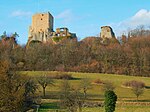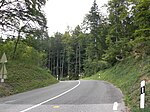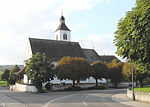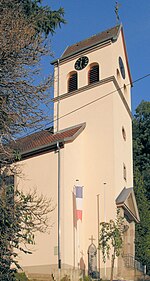Mariastein Abbey
1648 establishments in Europe17th-century Roman Catholic church buildings in Switzerland17th-century establishments in Switzerland1971 establishments in SwitzerlandBenedictine monasteries in Switzerland ... and 3 more
Buildings and structures in the canton of SolothurnChristian monasteries established in the 17th centuryReligious organizations established in the 1640s
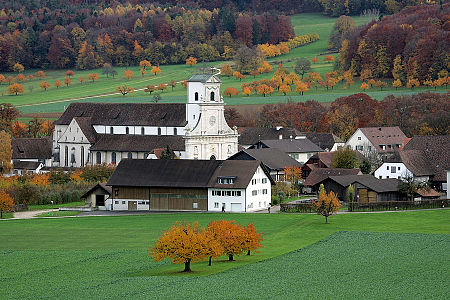
Mariastein Abbey (Kloster Mariastein) is a Benedictine monastery in Metzerlen-Mariastein in the Canton of Solothurn, Switzerland. Mariastein, after Einsiedeln, is the second most important place of pilgrimage in Switzerland. Over the Chapel of Grace ("Gnadenkapelle") now stands a late Gothic three-aisled basilica. The interior is Baroque and the entrance facade classicist.
Excerpt from the Wikipedia article Mariastein Abbey (License: CC BY-SA 3.0, Authors, Images).Mariastein Abbey
Klosterplatz, Bezirk Dorneck
Geographical coordinates (GPS) Address Phone number Website External links Nearby Places Show on map
Geographical coordinates (GPS)
| Latitude | Longitude |
|---|---|
| N 47.476111111111 ° | E 7.4922222222222 ° |
Address
Kloster Mariastein
Klosterplatz
4116 Bezirk Dorneck
Solothurn, Switzerland
Open on Google Maps
